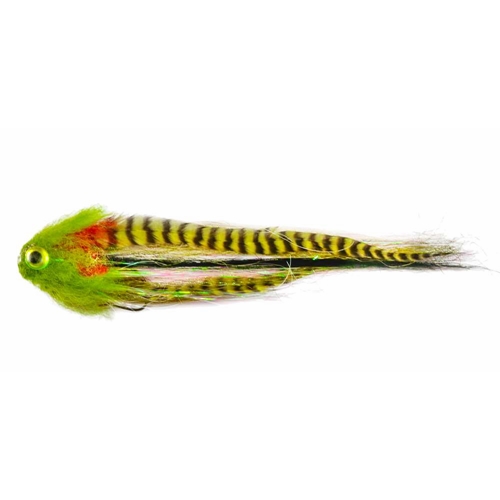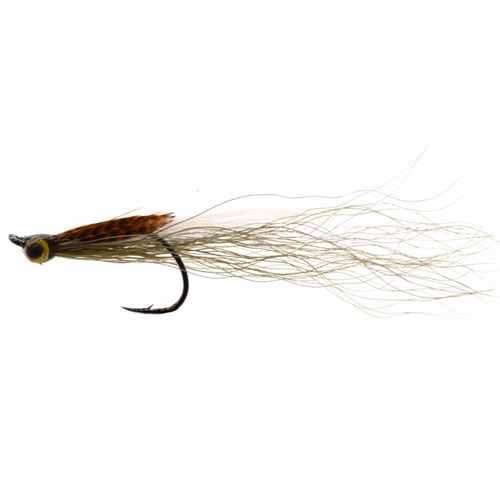DAMSEL NYMPHS
Electric blue damselflies zooming low over the water's surface are a sure indication that summer has finally arrived. Occassionally you may see trout hurling themselves into the air to grab the big damsel fly but this is rare. Trout mainly eat damsel flies in their aquatic nymph state, some of which can reach over one inch long. They make a substantial meal for a trout and are eaten wherever they can be found and this is one of the most popular fishing flies for Trout. Damsel nymphs are fierce predators that feed heavily on insects, small crustaceans and even tiny fish. There are 17 different damsel flies in Britain. The female adult damsel fly of some of the species is a dullish green rather than the brilliant electric blue body of the males. The nymphs head for weed cover as soon as they are born. Damsel nymphs are found in the warmer shallows of the lake but also in larger weed beds in open water.
Damselflies are related to dragon flies (order Odonata) though they are generally smaller and slimmer. Trout will feed on damsel nymphs throughout the year. Quite often the immature nymph is transparent straw colored which is why Magnus Nygren's Damsel works well . The olive, claret or brown colored mature nymphs are more prevalent during late May up till August. The color and time depend on where in the world you fish. The hottest part of the day either side of noon is the best time to see the mass migration of damselfly nymphs on to dry land. During the early part of the season this pattern can be fished very slowly along the bottom. Damsel fly Nymphs like shallow bays where weed is prolific as they feed on decaying vegetable matter. Cast your damsel fly nymph as close to the weedbeds as possible. Fish this pattern very slowly along the bottom, to represent the insect stalking prey, but occasionally move it along a small distance at a faster speed. Wade down the sides of large, slow pools and fish the fly slowly along the bottom. Cast down and across the stream at a ten degree angle and give the damsel nymph time to sink to the bottom. Every now and then use spurt pause spurt retrieve to imitate an attack. Use a three inch strip with your line hand and pause for about ten seconds to allow the water current to drift the fly slightly downstream, then strip again. Continue using this method all along the pool. As the fly moves, the damsel marabou tail will wiggle enticingly, just as the real insect's abdomen would do as it swims along.
During the warmer months the damsel nymphs are far more active and wriggle to the surface, whereupon they proceed to swim to the shore or towards surface weed in order to hatch into the adult damselflies. As soon as they reach it they crawl up and out of the water. They clamber up anything from an angler’s waders to riverside reeds and rushes. It is during this trek to shore that trout voraciously feed on damsel nymphs. Trout will even grab them when they are climbing up reeds before hatching! To simulate this activity, fish the fly on a floating line, letting it sink to the bottom before retrieving smoothly so that the fly lifts up in the water towards the surface. Where there are rushes or reeds it is often more productive to cast and retrieve along the shoreline. When they are above the surface level they hatch from their nymphal skin. They struggle to free themselves for up to 10 minutes. It takes a further hour for the new adult, called a 'Teneral', to fully inflate its wings. During this process they are very vulnerable if they have not got clear of the water. On a breezy day many new adults will get blown back on to the water and drown. During mating the coupled flies land on vegetation either in or very close to the water. the female climbs down and into the water and lays her eggs. This final act only happens when the sun is out. On overcast days the adults wait on the shore for the sun to appear.
Fishing The Damsel Nymph
Fishing around weedbeds in a water depth of four to eight feet provides the best success as this is where damsel nymphs hide. The nymphs are not the fastest of swimmers and they waggle their tails as the move. After allow the nymph to sink several feet.. The natural damsel nymph swims a few feet and then rests so for the fly fisherman the best option is to imitate this behaviour. Use a long retrieve followed by a pause, imitate the damsel nymph's waggle using a slow figure of eight rectrieve with a imitative 'waggle' every third or fourth figure of eight. By 'Waggle' simply flick of the wrist during the retrieval to ensure a jerkier motion, this kicks the tail into life and I have found often induces a strike. Remember to add a pause every few seconds to allow the damsel nymph to drop and imitate the pause of the natural damsel nymph. At the end of the retrieve lift the fly slowly out of the water as there may be a following trout that could attack the escaping nymph.



















